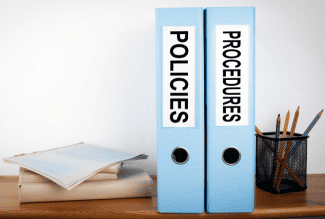How to Prevent a Tax Hit When Selling a Rental Property
Learn three ways to reduce your capital gains exposure

Case in point: That tax rate is 15% if you’re married filing jointly with taxable income between $83,350 and $517,200. If your taxable income is $517,200 or more, the capital gains rate increases to 20%.
For a married couple filing jointly with a taxable income of $280,000 and capital gains of $100,000, taxes on the profits from the sale of a rental property would amount to $15,000. Fortunately, there are ways of minimizing this capital gains tax bite. This article explains three of the most effective methods.
KEY TAKEAWAYS
- Selling rental properties can earn investors immense profits but may result in significant capital gains tax burdens.
- The capital gains tax rate is 15% if you’re married filing jointly with taxable income between $83,350 and $517,200.
- There are various methods of reducing capital gains tax, including tax-loss harvesting, using Section 1031 of the tax code, and converting your rental property into your primary place of residence.
Offset Gains With Losses
- What it is: Tax-loss harvesting
- Who it’s for: Anyone with capital losses in a given tax year
- What you get: The ability to subtract those losses from the capital gains realized from a rental property sale
Tax-loss harvesting describes the process of reducing tax exposure when selling a rental property by pairing the gains from the sale with the loss from another investment. This can be a tax planning strategy if an investor is holding an investment that has lost value (an unrealized loss) and decides to sell the asset at a loss in the same year as the gain on rental property sale (a realized loss). Although this tax-minimizing tactic primarily serves to offset gains from stock investments, more folks are now applying it to rental real estate property sales.
For example, assume an investor made $50,000 from the sale of a rental apartment in the current year. They also have an unrealized loss of $75,000 in the stock market. The investor can choose to sell off a portion of their stocks to realize a $50,000 loss in order to fully offset the $50,000 in capital gains.
Take Advantage of Section 1031 of the Tax Code
- What it is: IRS Section 1031 “like-kind” exchange
- Who it’s for: Anyone who can reinvest the proceeds of rental property sales in new real estate
- What you get: The ability to defer some or all taxes on the capital gain
Real estate investors can defer paying capital gains taxes using Section 1031 of the tax code, which lets them sell a rental property while purchasing a like-kind property and pay taxes only after the exchange is made. Legally speaking, the term like-kind is broadly defined. An investor need not swap out one condo for another or trade one business for another. As long as both properties in question are income-generating rental units, they’re fair game.
But timing is key with this method because investors have just 45 days from the date of a property sale to identify potential replacement properties, which they must formally close on within 180 days. And if a tax return is due (with extensions) before those 180 days, investors must close even sooner. Those who miss the deadline must pay full capital gains taxes on the sale of the original rental property.
Leverage Section 121 Primary Residence Exclusion
- What it is: Conversion of rental property into a primary residence
- Who it’s for: Anyone able to convert a rental property into their primary residence
- What you get: The ability to exclude as much as $500,000 in capital gains from taxes
Selling a home you live in is more tax beneficial than unloading a rental property for a profit. IRS Section 121 allows people to exclude up to $250,000 of the profits from the sale of their primary residence if they’re single and up to $500,000 if they’re married and filing jointly. To qualify, investors must have lived in their property as their primary residence for two of the five years immediately preceding the sale. However, the years as a personal residence do not have to be consecutive. For this reason, some investors choose to convert rental properties into their primary residences.
The deduction amount depends on how long the property was used as a rental versus its use as a primary residence. Additionally, a taxpayer may not exclude the portion of the gain that was previously attributable to a depreciation deduction. This is known as depreciation recapture, which is specific to rental properties, and the amount previously taken as a depreciation deduction is taxed at a recapture rate of 25%.
Rental property sale FAQs
What Happens to Depreciation When You Sell a Rental Property?
Any depreciation claimed on previous tax returns for this property must be recaptured when you sell the property. Consult with your tax advisor to get an estimate of how much you will have to pay.
What Deductions Can I Claim When I Sell a Rental Property?
Several deductions can be claimed specifically when you sell a rental property. These include transaction costs of the sale such as realtor commissions, title fees, and advertising fees. Consult with a tax professional to see what specific deductions you can claim.
Can I Avoid Capital Gains Tax on an Inherited Rental Property?
Yes. You can avoid paying capital gains tax on an inherited rental property through any of the three methods listed above. Additionally, you benefit by inheriting it on a stepped-up basis, meaning that you only pay on any gains over fair market value from the date of inheritance, not the original purchase price of the property.
The Bottom Line
Capital gains taxes can take a sizable chunk of profits from your rental property sales to the tune of 15% or 20% of your take. Fortunately, capital gains tax avoidance and deferment strategies can help ease that burden. As always, consult a tax professional for advice that is specific to your own rental-property situation.
Source: Investopedia















 Accessibility
Accessibility